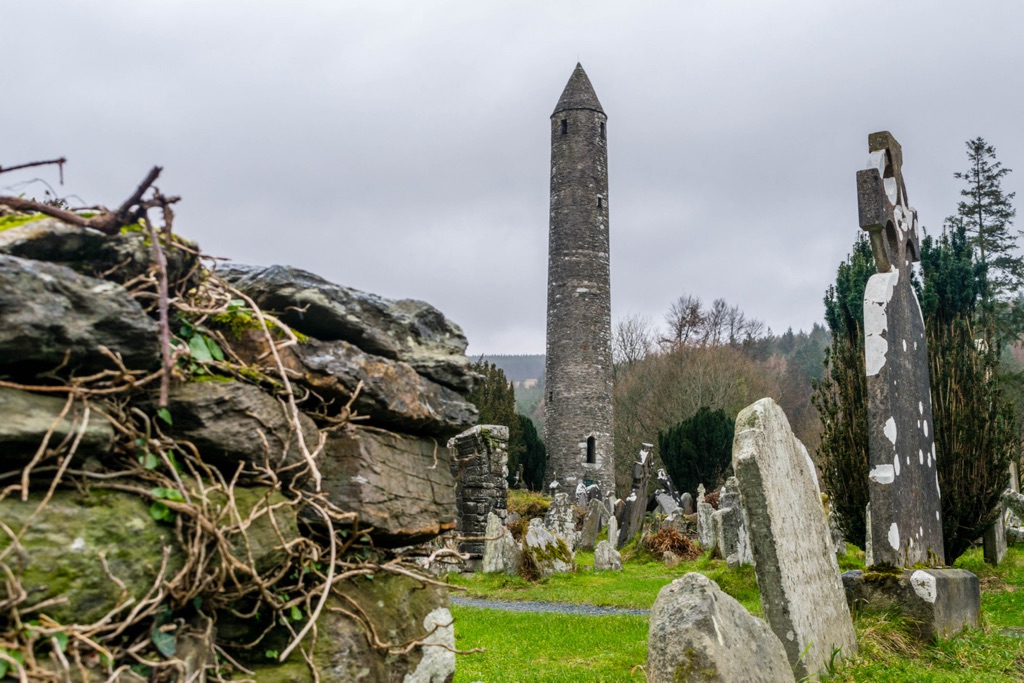Nestled in the Wicklow Mountains of Ireland, Glendalough is a historic site renowned for its monastic settlement. Founded by St. Kevin in the 6th century, it flourished as a center for religious learning and pilgrimage. The site boasts impressive remains, including a round tower, stone churches, and decorated crosses. Glendalough, meaning “Valley of the Two Lakes,” offers a glimpse into early Christian Ireland and has been a focal point for visitors for centuries.
Get your dose of History via Email
Historical Background of Glendalough
Glendalough’s history is as captivating as its scenery. Discovered by scholars and travelers over time, its origins trace back to St. Kevin. He sought solitude in this valley around 600 AD. The monastic city he founded became one of Ireland’s great ecclesiastical foundations. Glendalough thrived until the 13th century, despite Viking raids and Norman invaders. It later fell into decline, but its spiritual legacy endures.
St. Kevin’s hermitage attracted followers, leading to the establishment of the monastic site. The community expanded, constructing the iconic round tower and numerous churches. These structures were built by skilled craftsmen using local stone. The site was not only a religious hub but also a center of learning and manuscript production.
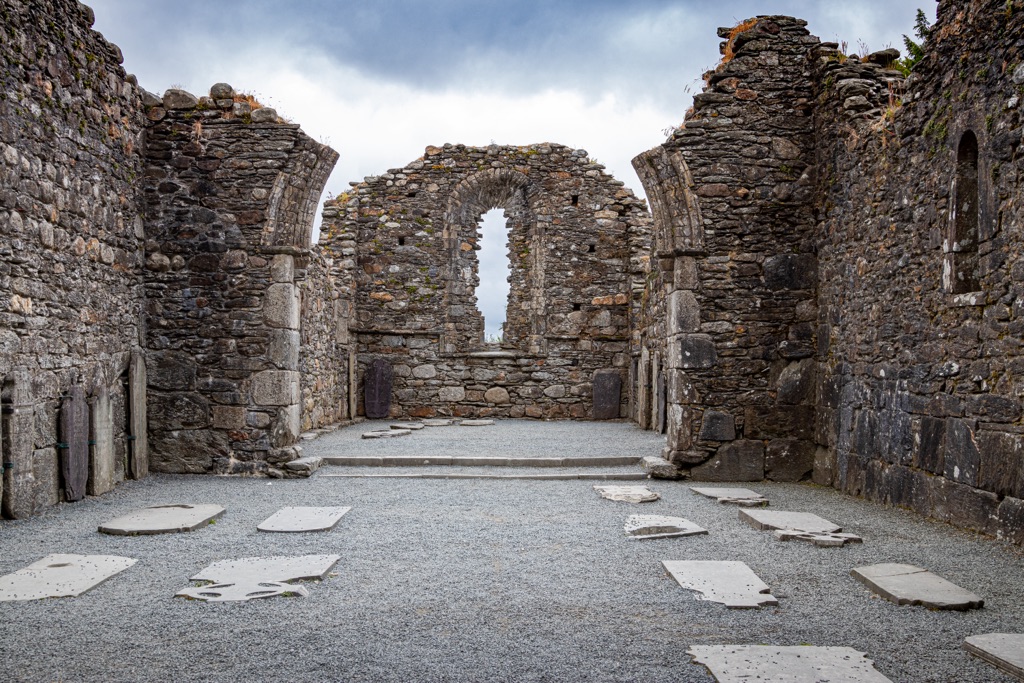
Over the centuries, Glendalough witnessed significant historical events. It was repeatedly raided by the Vikings but always recovered. In the 12th century, the Normans arrived, bringing changes to the religious landscape. The site remained an important pilgrimage destination, even after the dissolution of monasteries in the 16th century.
Glendalough’s monastic ruins were not systematically studied until the 19th century. Since then, archaeologists and historians have worked to uncover its past. The site has revealed a complex history of religious, cultural, and political significance. It has become a symbol of Ireland’s early Christian heritage and resilience.
Today, Glendalough is a protected national monument. It continues to attract those interested in history, archaeology, and spirituality. The site’s layered history reflects the broader narrative of Ireland’s past, from the early Christian period through medieval turmoil to modern-day appreciation of its cultural treasures.
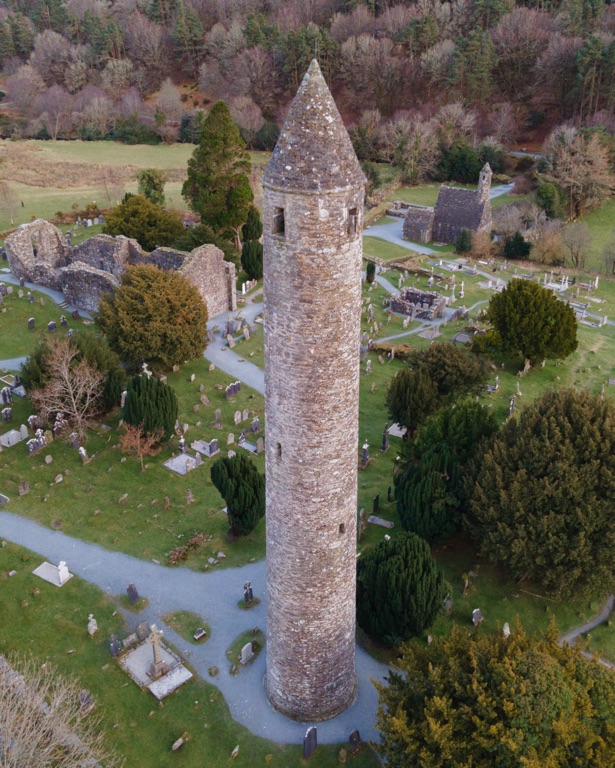
About Glendalough
Glendalough’s monastic site is a testament to early Christian architecture and Irish heritage. The round tower, standing at 30 meters, served as a bell tower and place of refuge. The site includes several churches, such as St. Kevin’s Church, with its distinctive belfry. The Cathedral, the largest church, showcases intricate stonework and historical significance.
The buildings at Glendalough were constructed using mica-slate and granite, locally sourced materials. The craftsmanship is evident in the surviving high crosses and the stone-roofed St. Kevin’s Kitchen. The layout of the site reflects the monastic community’s needs for worship, living quarters, and scriptoriums.
Architectural highlights include the Priest’s House, a reconstructed 12th-century building, and St. Mary’s Church. The latter is known for its Romanesque carvings. The site’s round tower is one of the best-preserved in Ireland, with its conical cap and doorway some meters above ground level.
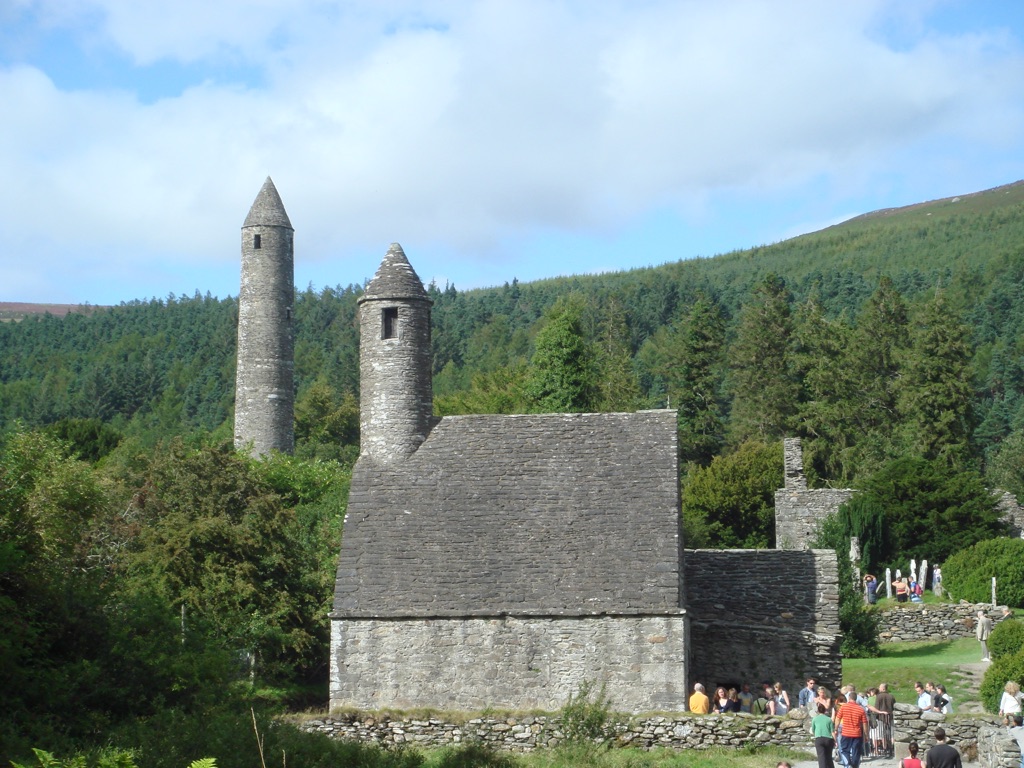
Glendalough’s landscape contributes to its spiritual atmosphere. The two lakes, after which the valley is named, provide a serene backdrop. The site’s natural beauty complements the monastic ruins, creating a harmonious blend of history and nature.
Preservation efforts ensure that Glendalough remains a well-maintained historical site. Visitors can explore the ruins, walk the ancient paths, and imagine life in this monastic city. The site’s visitor center offers insights into its construction and significance throughout the centuries.
Theories and Interpretations
Glendalough’s purpose as a monastic settlement is well-documented, but some aspects remain shrouded in mystery. Theories about the site’s specific uses and the daily lives of its inhabitants abound. Scholars have pieced together a picture of monastic life, but gaps in the historical record invite speculation.
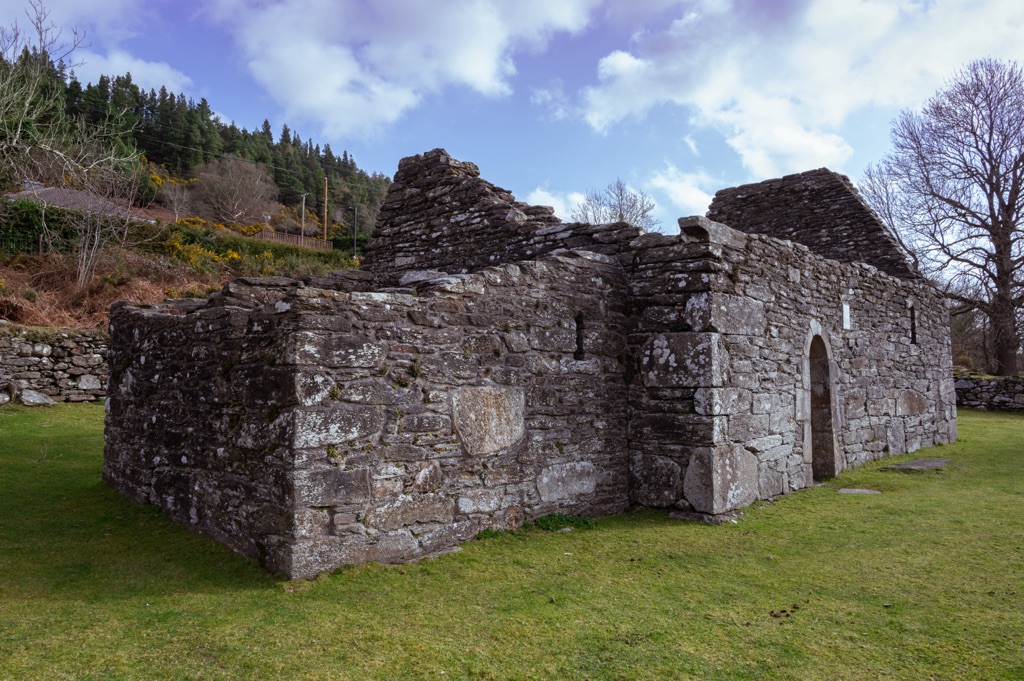
One theory suggests that the round tower had astronomical functions. Others argue it was purely defensive. The exact uses of some buildings, like St. Kevin’s Kitchen, are also debated. Was it a chapel, a kitchen, or both? These questions fuel ongoing research and interpretation.
The site’s crosses and gravestones have inscriptions and symbols that scholars interpret as religious and cultural messages. These artifacts provide a window into the beliefs and practices of the monastic community. However, the full meaning of some symbols remains elusive.
Archaeological dating at Glendalough has employed various methods, including dendrochronology and radiocarbon dating. These techniques have helped establish a timeline for the site’s construction and use. Yet, the exact chronology of some structures is still uncertain.
Glendalough’s history is a tapestry of fact and legend. St. Kevin’s life, for example, is interwoven with miraculous tales. Separating historical fact from myth is a challenge for researchers. The site continues to be a focus for academic study, as each discovery adds to our understanding of this enigmatic place.
At a glance
Country: Ireland
Civilization: Early Christian Ireland
Age: Founded in the 6th century (around 600 AD)
Conclusion and Sources
Reputable sources used in creating this article include:
- Wikipedia: https://en.wikipedia.org/wiki/Glendalough

